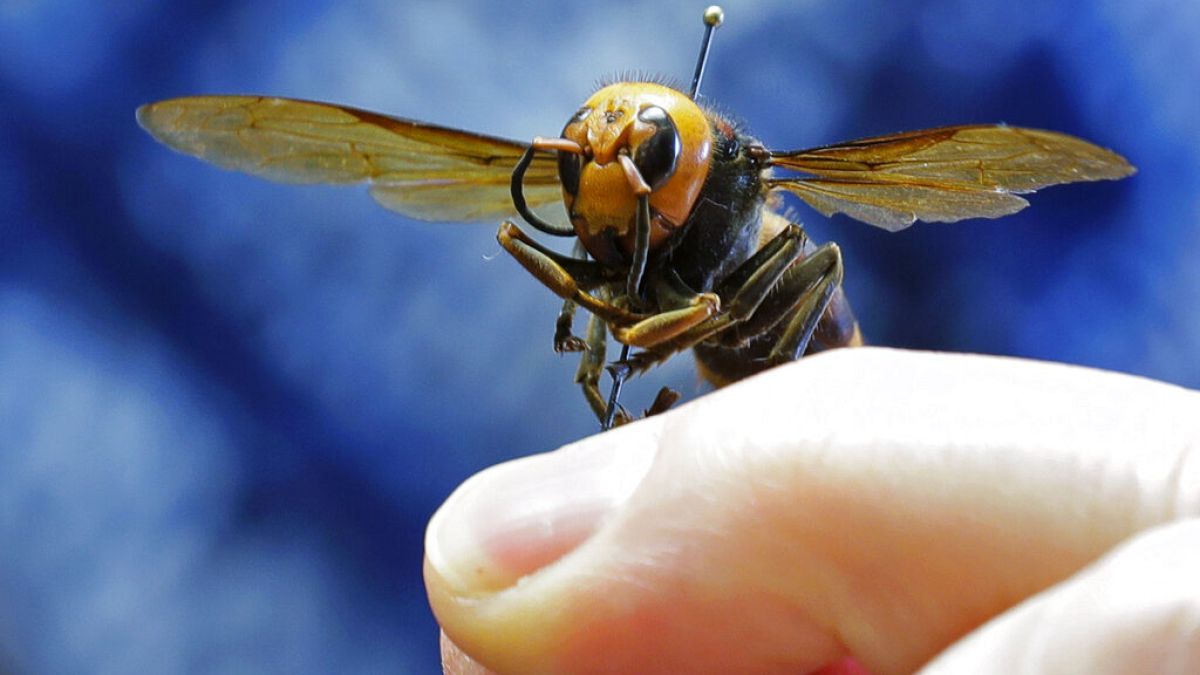Its sting is very painful and potentially deadly. The Asian giant hornet has been spotted for the first time in the United States, where it threatens local bees and the farmers that depend on them.
It’s known as the "murder hornet" in Asia and it has now made its way to the United States.
The world’s largest hornet, Vespa mandarinia, has been found in Washington State, in the northwest of the country, where entomologists are plotting to eradicate the species before it wipes out bee populations.
The hornet, which is around 5 centimetres long, normally lives in the forests and low mountains of eastern and southeast Asia. It feeds on large insects such as wasps and honeybees and has a sting that can be fatal to humans.
"If someone stumbles across a nest and you get stung by a few of these hornets, it can cause serious health concerns, especially if someone is allergic to these types of stings," says Todd Murray, entomologist at Washington State University.
The Asian giant hornet was sighted for the first time in Washington State in December and started to emerge from hibernation in April.
WSU researchers are now working with the Washington State Department of Agriculture, beekeepers and local residents to find it, study it and help curb its spread.
Beekeeping suits won't stop them
Many people in Western Europe may already be familiar with Vespa velutina, a smaller but also very aggressive hornet from Asia that measures around 3 centimetres.
The one making headlines this spring is a different beast that has yet to make its way to Europe: The Asian giant hornet, Vespa mandarinia, usually measures between 3 ½ and 5 centimetres, has a large yellow-orange head with prominent eyes and a black and yellow striped abdomen.
"They’re like something out of a monster cartoon with this huge yellow-orange face," said Susan Cobey, bee breeder with Washington State University’s Department of Entomology.
It has been dubbed the "murder hornet" in Japan, where it is known to kill up to 50 people a year in Japan, according to The New York Times.
Its big stinger can punch right through regular beekeeping suits – multiple times – and can deliver nearly seven times the amount of venom as a honeybee.
In British Columbia, Canada, where Asian giant hornets were also spotted last year, a beekeeper tasked with destroying their nest was stung multiple times. He likened the pain from their sting to "having red-hot thumbtacks" driven into his flesh.
Ferocious predator
But what experts are most worried about is its potential to devastate US bee populations, which have already been declining.
"Our biggest fear is that it will actually impact small beekeepers and maybe drive them out of business and raise costs for larger beekeepers. It's just something we don't want to see happen," said Chris Looney, entomologist at the Washington State Department of Agriculture.
The Asian giant hornet's life cycle begins in April, when queens emerge from hibernation, feed on plant sap and fruit, and look for underground dens to build their nests.
Hornets are most destructive in the late summer and early fall, when they attack honey bee hives, killing adult bees and devouring bee larvae and pupae, according to Washington State University.
The Washington State Department of Agriculture has ordered special reinforced suits from China and is now working to trap the hornet’s queens.
